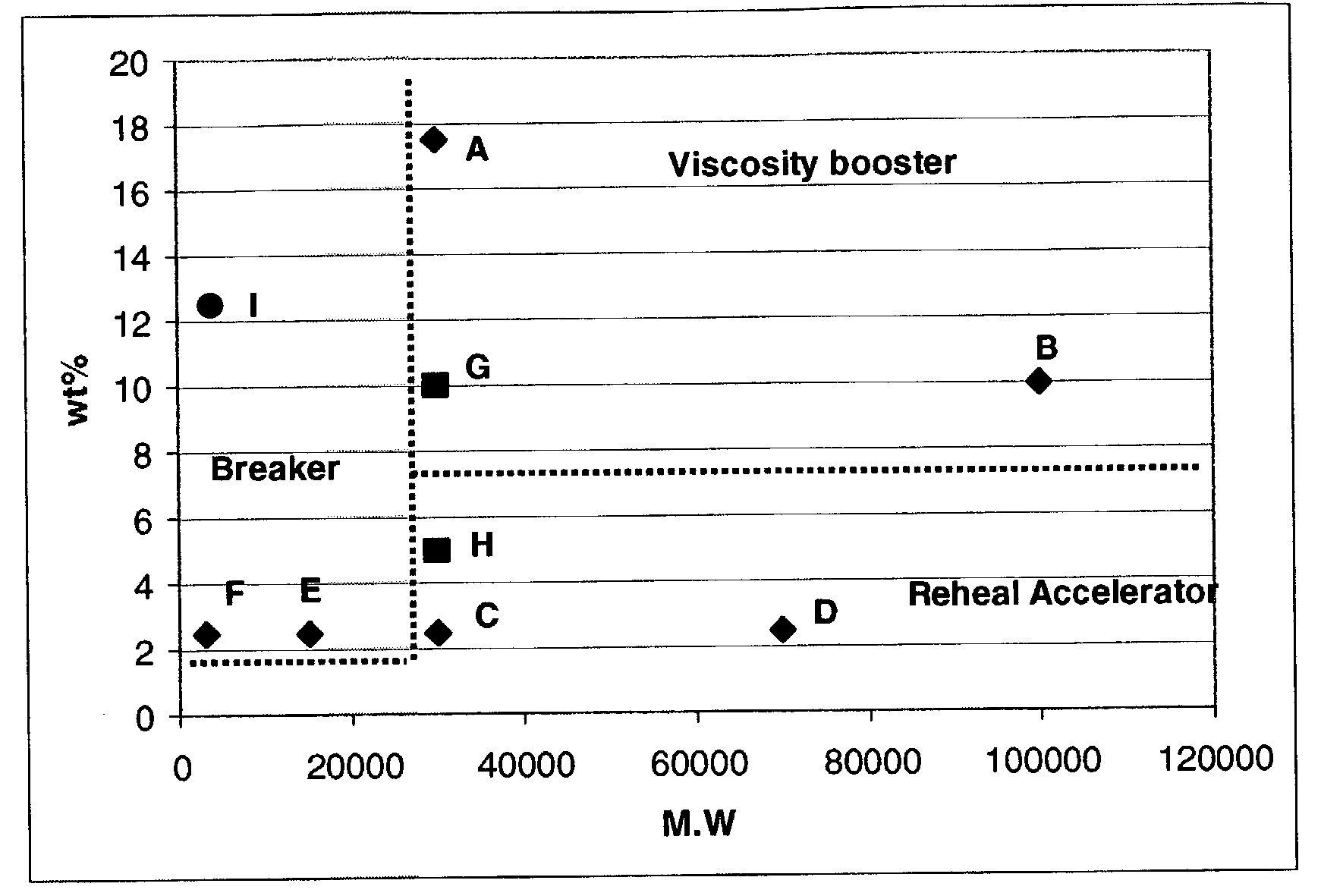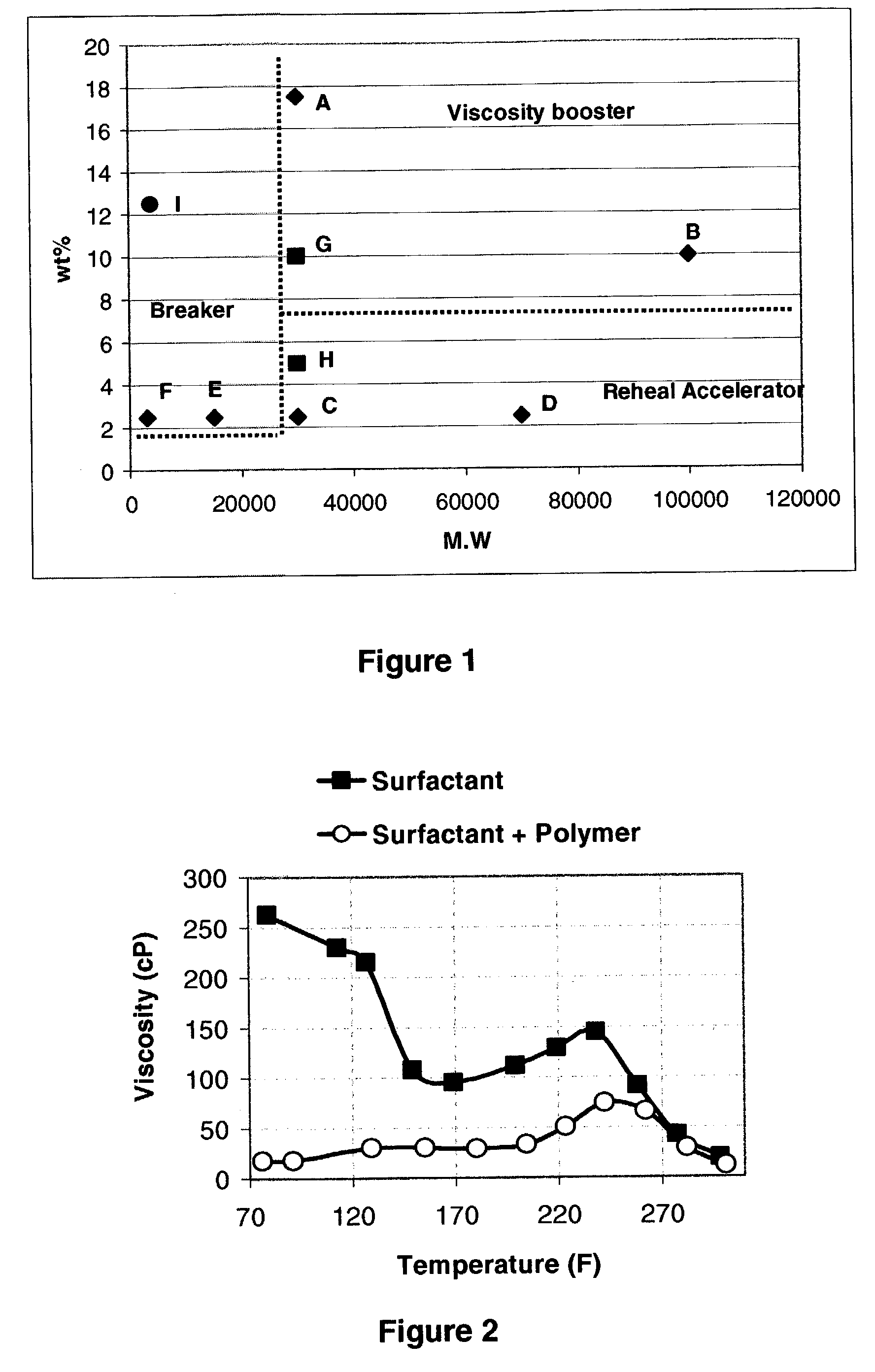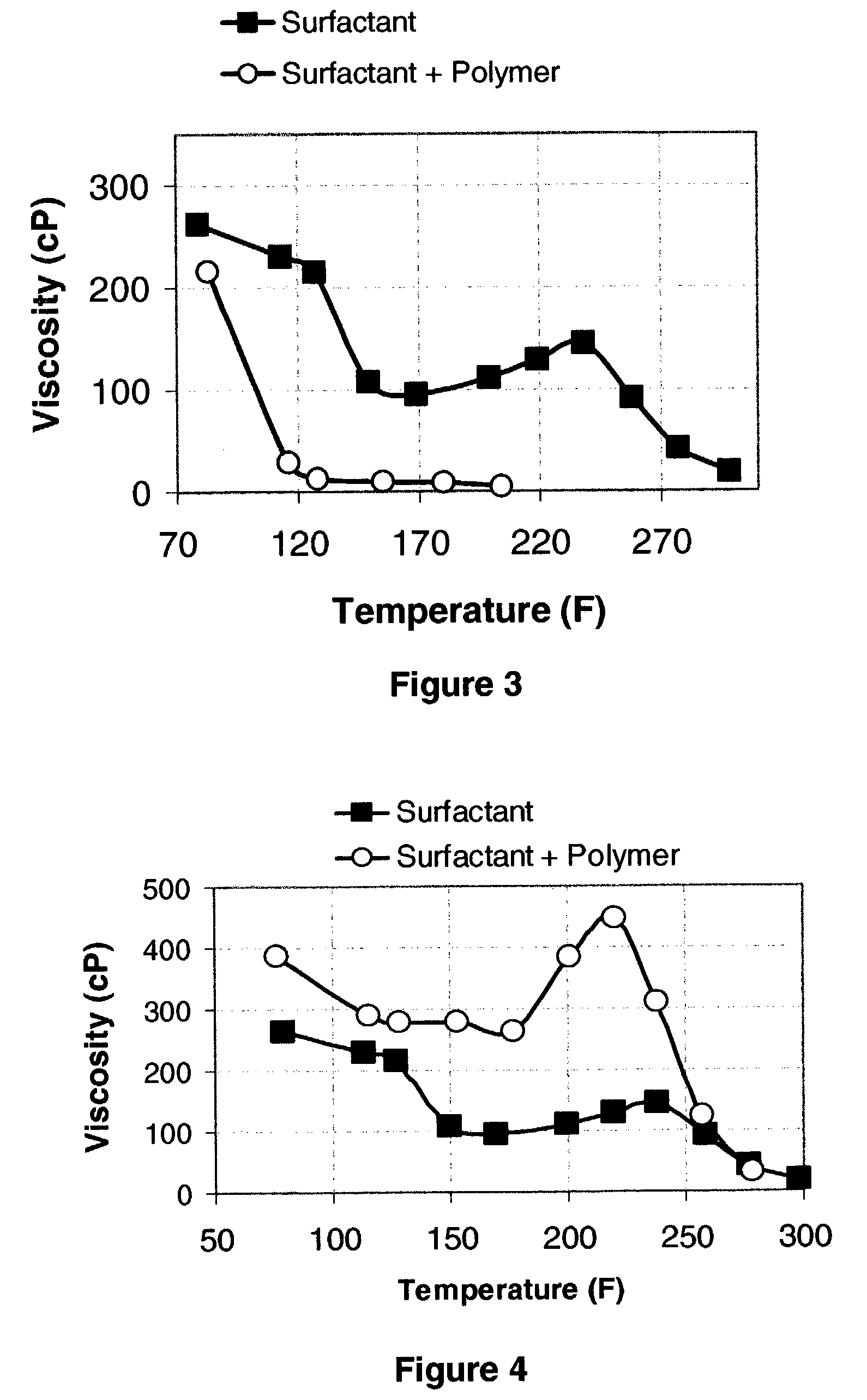Methods for controlling the rheological properties of viscoelastic surfactants based fluids
a technology of viscoelastic surfactant and rheological properties, applied in the direction of sealing/packing, chemistry apparatus and processes, wellbore/well accessories, etc., can solve the problems of logistical problems, requiring extensive field personnel training, and time-consuming approaches, so as to increase the viscosity of the viscoelastic fluid, the sensitivity of the viscoelastic system fluid can be seen and hydrated. , the effect of increasing the visco
- Summary
- Abstract
- Description
- Claims
- Application Information
AI Technical Summary
Benefits of technology
Problems solved by technology
Method used
Image
Examples
example 1
Additions of Polymers to Adjust the Viscosity
[0036]In the application of viscoelastic surfactant based gelling compositions comprising viscoelastic surfactants in combination with polymers, drastically different effects may be achieved depending on the molecular weight of the polymer and the weight ratio of added polymers to the viscoelastic surfactant.
[0037]For examples, to an aqueous solution comprising a surfactant (in test A to F and I a zwitterionic surfactant noted Z1, Erucic amidopropyl dimethyl betaine) and in test G and H, a cationic quaternary amine) is added different type of polymers (PNS: polynaphtalene sulfonate or PSS:polystyrene sulfonate or PPG:polypropyenel glycol), whose molecular weight is listed in table I below. The weight ratio of polymer to the surfactant is noted by Wt %. Table I
[0038]
TABLE IMolecularTest #SurfactantPolymerWeightWt %EffectAZ1PNS3000017.5BoosterBZ1PNS100000 10BoosterCZ1PNS300002.5HealerDZ1PNS700002.5HealerEZ1PSS150002.5BreakerFZ1PSS 30002.5Br...
example 2
Polymer as Breaking Agent
[0040]A base fluid was prepared by adding to water 2.4 weight percent of erucic amidopropyl dimethyl betaine. 0.06 wt % (weight percent) of polystyrene sulfonate (having a molecular weight estimated between 15000 and 20000) is added to the solution so that the value of Wt % is equal to 2.5%. The fluid viscosities with and without the polymer additive were determined at 100 sec−1 from 70° F. to 310° F. and plotted FIG. 2. FIG. 2 shows that a substantial decrease in fluid viscosity is observed when the polystyrene sulfonate breaker is present. This reduction in fluid viscosity is permanent.
example 3
Polymer as Breaking Agent
[0041]A base fluid was prepared by adding to water 2.4 weight percent of erucic amidopropyl dimethyl betaine. 0.06 wt % of polystyrene sulfonate (having a molecular weight estimated between 3000 and 5000) is added to the solution so that the value of Wt % is equal to 2.5%. The fluid viscosities with and without the polymer additive were determined at 100 sec−1 from 70° F. to 310° F. and plotted FIG. 2. FIG. 3 shows that a substantial decrease in fluid viscosity is achieved upon adding the polystyrene sulfonate breaker. This reduction in fluid viscosity is permanent.
PUM
| Property | Measurement | Unit |
|---|---|---|
| Fraction | aaaaa | aaaaa |
| Weight | aaaaa | aaaaa |
| Concentration | aaaaa | aaaaa |
Abstract
Description
Claims
Application Information
 Login to View More
Login to View More - R&D
- Intellectual Property
- Life Sciences
- Materials
- Tech Scout
- Unparalleled Data Quality
- Higher Quality Content
- 60% Fewer Hallucinations
Browse by: Latest US Patents, China's latest patents, Technical Efficacy Thesaurus, Application Domain, Technology Topic, Popular Technical Reports.
© 2025 PatSnap. All rights reserved.Legal|Privacy policy|Modern Slavery Act Transparency Statement|Sitemap|About US| Contact US: help@patsnap.com



